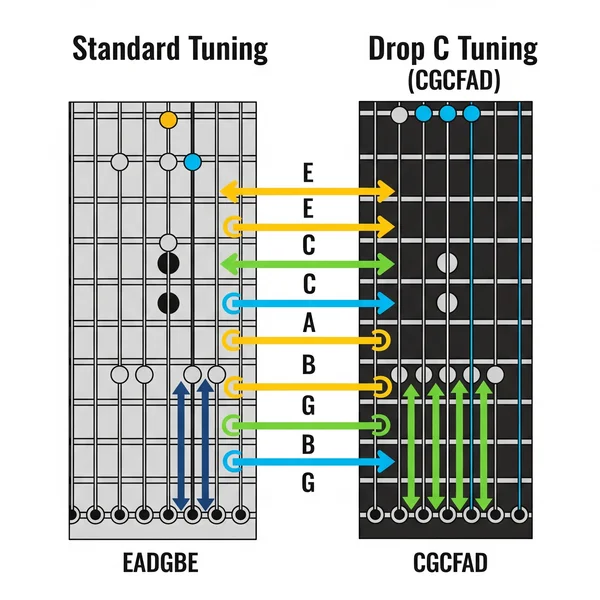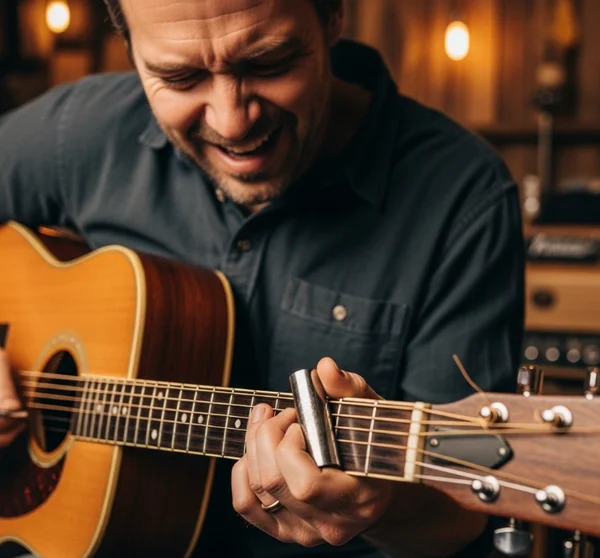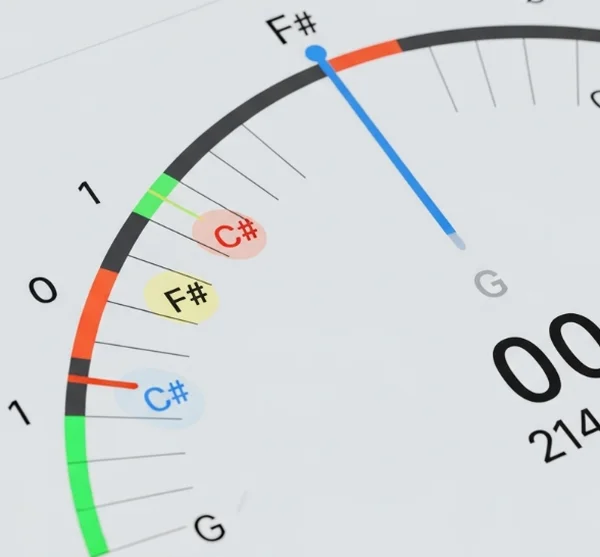Beyond EADGBE: Exploring Alternate Guitar Tunings
Unlock New Sounds: A Guide to Common Alternate Guitar Tunings
For most guitarists, EADGBE is the familiar home base, the standard tuning that unlocks countless songs and styles. It's versatile, logical, and the foundation upon which much of modern guitar playing is built. But what if there was a whole universe of new guitar sounds and creative possibilities lying just a few twists of your tuning pegs away? Welcome to the exciting world of alternate guitar tunings! What are alternate guitar tunings? They are any tuning that deviates from standard, and they can be your secret weapon for breaking creative ruts, achieving unique timbres, and making complex passages surprisingly accessible. This guide will serve as your guitar tuning explorer, leading you through some of the most common and inspiring different guitar tunings.
The World of Different Guitar Tunings: Definition & Appeal
Before we dive into specific examples, let's understand what we're talking about and why so many renowned guitarists venture into these non-standard tunings.
What Exactly Are Alternate Guitar Tunings?
Simply put, an alternate guitar tuning is any arrangement of pitches for the open strings of your guitar that differs from the standard EADGBE (from lowest to highest string). This could involve lowering one or more strings (like in Drop D or Drop C), raising strings, or a complete reshuffling to create open chords or modal soundscapes. The possibilities for custom guitar tuning are virtually endless.
The Allure of Altered States: Why Explore Different Guitar Tunings?
Why would you want to step away from the tried-and-true standard tuning? The reasons are as varied as the tunings themselves:
-
Expanding Your Sonic Palette: Discovering New Guitar Voices Each tuning changes the way your guitar resonates. Different string tensions and intervallic relationships create unique timbres, overtones, and an overall "voice" for your instrument that you simply can't achieve in standard. It’s like giving your guitar a new personality.
-
Unlocking New Harmonies: Fresh Chord Voicings and Melodic Pathways Alternate tunings can transform familiar chord shapes into something entirely new, or make previously difficult or impossible chord voicings easy to play. This opens up a wealth of fresh harmonic possibilities and can lead to unique melodic ideas.
-
Creative Catalysts: Breaking Songwriting Ruts If you ever feel stuck playing the same patterns and licks, changing your tuning can be an incredible source of creative guitar playing inspiration. The unfamiliar fretboard landscape forces you to think differently and often leads to unexpected riffs, melodies, and song structures.
-
Style-Specific Advantages: Making Difficult Passages More Accessible Certain tunings are intrinsically linked to specific genres or playing techniques. For example, open tunings are fantastic for slide guitar, while tunings like DADGAD are a cornerstone of Celtic and fingerstyle music, often simplifying complex passages within those styles. Click here to explore tunings on our site after learning about these options.
Your First Step Beyond: The Popularity of Drop D Guitar Tuning (DADGBe)
For many guitarists, the first venture into the world of alternate guitar tunings is Drop D. It’s simple to achieve and instantly rewarding.
A Familiar Detour: Understanding Drop D Guitar Tuning
- Quick Recap: How to Achieve Drop D To get into Drop D, you simply lower your 6th string (the low E) by a whole step down to D. The other five strings (A, D, G, B, e) remain the same. So, your tuning becomes DADGBe.
- The Power Chord Advantage in Rock and Metal The most immediate benefit of Drop D is the ability to play power chords on the lowest three strings with a single finger barred across them. This makes for quick, heavy-sounding riffs, which is why it's a staple in rock, metal, and punk music.
- Famous Songs You Already Know in Drop D Countless iconic songs utilize Drop D, from Nirvana's "Smells Like Teen Spirit" to Foo Fighters' "Everlong" and many Soundgarden tracks. Drop D serves as a comfortable and effective gateway, demonstrating how a small change can have a big impact before you start exploring guitar tunings further.
Descending Deeper: The Heavy Realm of Drop C Tuning (CGCFAD)
If Drop D gives you a taste of lower, heavier sounds, then Drop C tuning takes it to another level, favored by musicians in metal, hardcore, and other aggressive genres.
Exploring the Depths: An Introduction to Drop C Tuning
- The Notes of Drop C: CGCFAD Unpacked
To achieve Drop C from standard tuning, you tune every string down a whole step, and then you lower the new "D" (formerly E) string another whole step to C. So, the notes become:
-
6th string: C
-
5th string: G
-
4th string: C
-
3rd string: F
-
2nd string: A
-
1st string: D
-

-
The Sonic Impact: Achieving That Crushing Low End for Metal & Hard Rock Drop C delivers a significantly lower and heavier sound than Drop D, providing that "chug" and "thump" so characteristic of many heavy metal tuning styles. The low C string offers immense power.
-
Navigating the Fretboard: Chord Shapes and Riffing in Drop C Similar to Drop D, power chords on the lowest three strings (CGC) are easy one-finger barres. However, all other familiar chord shapes from standard tuning will need to be relearned or adapted due to the overall lower pitch. Riffing possibilities become very percussive and aggressive.
-
Essential Considerations: String Gauge and Guitar Setup for Drop C Tuning This is crucial: tuning down this low significantly reduces string tension. To maintain playability and avoid floppy, buzzing strings, you will almost certainly need to use a heavier gauge of guitar strings (e.g., .011s, .012s, or even .013s for the high E, with correspondingly thicker bass strings). Furthermore, your guitar may require a setup adjustment (truss rod, intonation) to accommodate the change in tension and ensure it plays and sounds its best. Neglecting this can lead to poor tone and playability. Achieving stable drop c tuning benefits greatly from a precise chromatic tuner online.
Embracing the Resonance: The Beauty of Open D Tuning (DADF#AD)
Moving away from "drop" tunings, we enter the world of "open" tunings, where the open strings themselves form a complete chord. Open D tuning is one of the most popular and beautiful.
The World of Open D Tuning: Rich Harmonics and Slide Guitar Magic
-
The Harmonically Rich Notes of DADF#AD In Open D, your guitar is tuned to D A D F# A D. When you strum all the open strings, you hear a resonant D major chord. This inherent harmony is what gives open tunings their unique character.
-
A Favorite for Acoustic, Folk, and Blues Styles Open D is widely used in acoustic music, folk traditions (especially American folk), and blues. Its full, ringing sound lends itself beautifully to fingerpicking and strumming. Think of artists like Bob Dylan or early blues masters.
-
Playing with Openness: Chords and Melodies in Open D Tuning One of the immediate joys of acoustic guitar open d is the ease of playing major chords: simply barre one finger across all strings at any fret. Melodies can be woven around the open drone strings, creating beautiful, ringing textures.
-
The Perfect Marriage: Open D Tuning and Slide Guitar Techniques Open D is a classic slide guitar open d tuning. Because the open strings form a major chord, placing a slide straight across any fret also produces a major chord, making it incredibly intuitive for slide playing. Many iconic slide guitar licks are rooted in Open D. If you're keen to explore this, our tuner online can help you get perfectly into DADF#AD.

The Celtic Soul: Unveiling the Mysteries of DADGAD Tuning
DADGAD tuning is another highly influential alternate tuning, particularly beloved in Celtic music and modern fingerstyle guitar. It has a unique, almost mystical quality.
DADGAD Tuning: An Enchanting Soundscape for Guitarists
-
Decoding DADGAD: Modal Flavors and Ethereal Drone Effects As the name suggests, DADGAD tuning is D A D G A D. It's not an open major or minor chord like Open D or Open G. Instead, it creates a "suspended" or modal sound (Dsus4, with the G being the 4th of D). This allows for beautiful drones on the D and A strings, over which melodies can be played. The celtic guitar sound is often associated with DADGAD.
-
A Cornerstone of Irish, Scottish, and Modern Fingerstyle Guitar DADGAD is a hallmark of traditional Irish and Scottish folk music accompaniment. It has also been adopted and expanded upon by countless contemporary fingerstyle dadgad guitarists like Pierre Bensusan, Tony McManus, and many others, who exploit its unique harmonic and melodic potential.
-
Weaving Melodies and Chords: Navigating DADGAD Tuning Chord shapes in DADGAD are entirely different from standard tuning. It often involves using partial chords, open string drones, and intricate fingerpicking patterns to create its characteristic sound. Melodies often weave in and out of the droning bass and middle strings.
-
The "Airy" and Atmospheric Quality: Why DADGAD Captivates DADGAD is known for its "airy," atmospheric, and somewhat melancholic or reflective quality. It can evoke vast landscapes and ancient melodies. Getting this intricate dadgad tuning spot-on is essential, and a precise online tuner is invaluable.

A Glimpse Beyond: Other Notable Alternate Guitar Tunings for Your Exploration
The world of different guitar tunings is vast. Beyond Drop C, Open D, and DADGAD, many other alternate guitar tunings have left their mark on music. Here are a few more to pique your interest as a guitar tuning explorer:
-
Open G Tuning (DGDGBD): The Rolling Stones' Secret & Blues Staple Famously used by Keith Richards (often with the 6th string removed) and a cornerstone of blues guitar. (You can find more on this in our dedicated Open G article!)
-
Open C Tuning (CGCGCE or CGCGGE): Deep, Dark, and Resonant This tuning offers an incredibly low and powerful sound, often used for atmospheric or heavy music.
-
Nashville Tuning (High-Strung EADGBe): Bright, Shimmering, and Ethereal This isn't a change in note names, but rather, the E, A, D, and G strings are replaced with lighter gauge strings and tuned an octave higher than standard, while the B and high E strings remain the same. It creates a jangly, 12-string-like effect.
-
Artist-Specific Tunings: The Unique Voices of Icons (e.g., Joni Mitchell, Nick Drake, Michael Hedges) Many influential guitarists develop their own idiosyncratic custom guitar tuning variations that become integral to their unique sound. Exploring these can be a fascinating journey. How do I find songs that use specific alternate tunings? Often, researching your favorite artists is a great start.
Your Chromatic Companion: Tuning to Alternate Worlds with Tuner.wiki
Now that you're armed with knowledge about these exciting alternate guitar tunings, you might be wondering, "How do I actually tune my guitar to these notes?" This is where a good chromatic tuner becomes indispensable, and our tuner online is perfectly equipped for the job.
The Key to Unlocking Any Tuning: Using Tuner.wiki's Chromatic Capabilities
-
The Power of a Chromatic Online Tuner: Beyond Standard Presets Unlike basic tuners that might only show standard EADGBE, a chromatic tuner online like the one on
tuner.wikican detect and display any of the 12 notes in the Western musical scale (C, C#, D, D#, E, F, F#, G, G#, A, A#, B). This means you can use it to accurately achieve any custom guitar tuning you can imagine, including all the different guitar tunings discussed in this article.

-
Step-by-Step: Setting Your Sights on New Notes with Tuner.wiki
- Know Your Target Notes: First, clearly identify the notes for each string in your desired alternate tuning (e.g., for Drop C: C-G-C-F-A-D).
- Select a String: Start with one string, usually the lowest.
- Pluck and Adjust: Pluck the string and watch the display on
tuner.wiki. - Tune to the Target Note: Carefully adjust the tuning peg until the display shows the correct target note for that string and indicates it's in tune (e.g., the needle is centered, the indicator turns green).
- Repeat for All Strings: Systematically move through each string, tuning it to its specific note in the alternate tuning.
-
Ensuring Pinpoint Accuracy for Each String in Your New Sonic Landscape Take your time with each string. The beauty and unique character of alternate guitar tunings are fully realized only when each string is precisely in tune with the others according to the chosen scheme. Our tuner online provides real-time visual feedback to help you achieve this precision.
Your Guitar's Untapped Potential Awaits Your Tuning Exploration!
Stepping beyond standard EADGBE is like opening a new door in your musical house. Alternate guitar tunings offer a universe of fresh sounds, creative inspiration, and new ways to express yourself on the instrument.
Embark on Your Alternate Tuning Journey Today!
We've journeyed through the heavy depths of Drop C, the resonant beauty of Open D, the Celtic magic of DADGAD, and glimpsed even more different guitar tunings. The world of guitar tuning exploration is vast and incredibly rewarding. Don't be intimidated by the unfamiliar; embrace the challenge and the joy of discovery.
Start Experimenting: Pick a Tuning and Dive In!
Choose one of the alternate guitar tunings discussed here that piques your interest. Use a reliable tool like our online chromatic tuner to get your guitar into the new tuning accurately, and then simply play. Explore new chord shapes, listen to how the strings interact, and see what new melodies emerge. What's the easiest alternate tuning to start with besides Drop D? Many find Open D or Open G quite accessible.
Share Your Favorite Alternate Tunings and Discoveries
The journey into exploring guitar tunings is often a personal one, but it's also great to share. What are your favorite alternate guitar tunings? Are there any specific songs or artists that inspired you to try them? Have you created your own unique custom guitar tuning? Let us know in the comments below – we'd love to hear about your adventures and help build a community of tuner.wiki users exploring the full potential of their instruments!
Your Questions About Venturing into Alternate Guitar Tunings Answered
Are alternate tunings bad for my guitar's neck?
Generally, no, as long as you're sensible. Drastic changes in overall string tension (like tuning way up or using extremely heavy strings for very low tunings without adjustment) could potentially affect the neck over a long period. For most common alternate guitar tunings, especially those that involve tuning down, the risk is minimal. If you're making a significant change like to Drop C tuning, it's wise to consider a setup adjustment and appropriate string gauges, as mentioned earlier, to maintain optimal playability and neck relief.
Do I need different strings for alternate tunings like Drop C?
For tunings that significantly lower string tension, like Drop C tuning, using a heavier gauge of strings is highly recommended. Standard gauge strings will feel very loose ("floppy") and may not intonate well or hold their pitch properly when tuned that low. Heavier strings compensate for the reduced tension, providing better feel, tone, and tuning stability. You can always use our tuner online to check your tuning stability.
What's the easiest alternate tuning to start with besides Drop D?
After Drop D, many find Open G (DGDGBD) or Open D (DADF#AD) to be quite accessible and rewarding. Because they tune to an open chord, you can make music immediately by simply strumming or barring a single finger. They are also great for learning basic slide guitar.
How do I find songs that use specific alternate tunings?
Many online guitar tab websites allow you to search or filter songs by tuning. You can also research your favorite artists – many guitar magazines, interviews, or fan communities discuss the tunings used by prominent players. For example, searching "songs in DADGAD tuning" or "Keith Richards Open G songs" will yield many results.
Can I use Tuner.wiki for any alternate guitar tuning I invent?
Absolutely! Because tuner.wiki features a chromatic tuner online, it can recognize and help you tune to any of the 12 notes in the musical scale for each string. So, whether you're exploring established alternate guitar tunings or creating your very own unique custom guitar tuning, our tool is ready to assist you in achieving tuning to any note with precision.